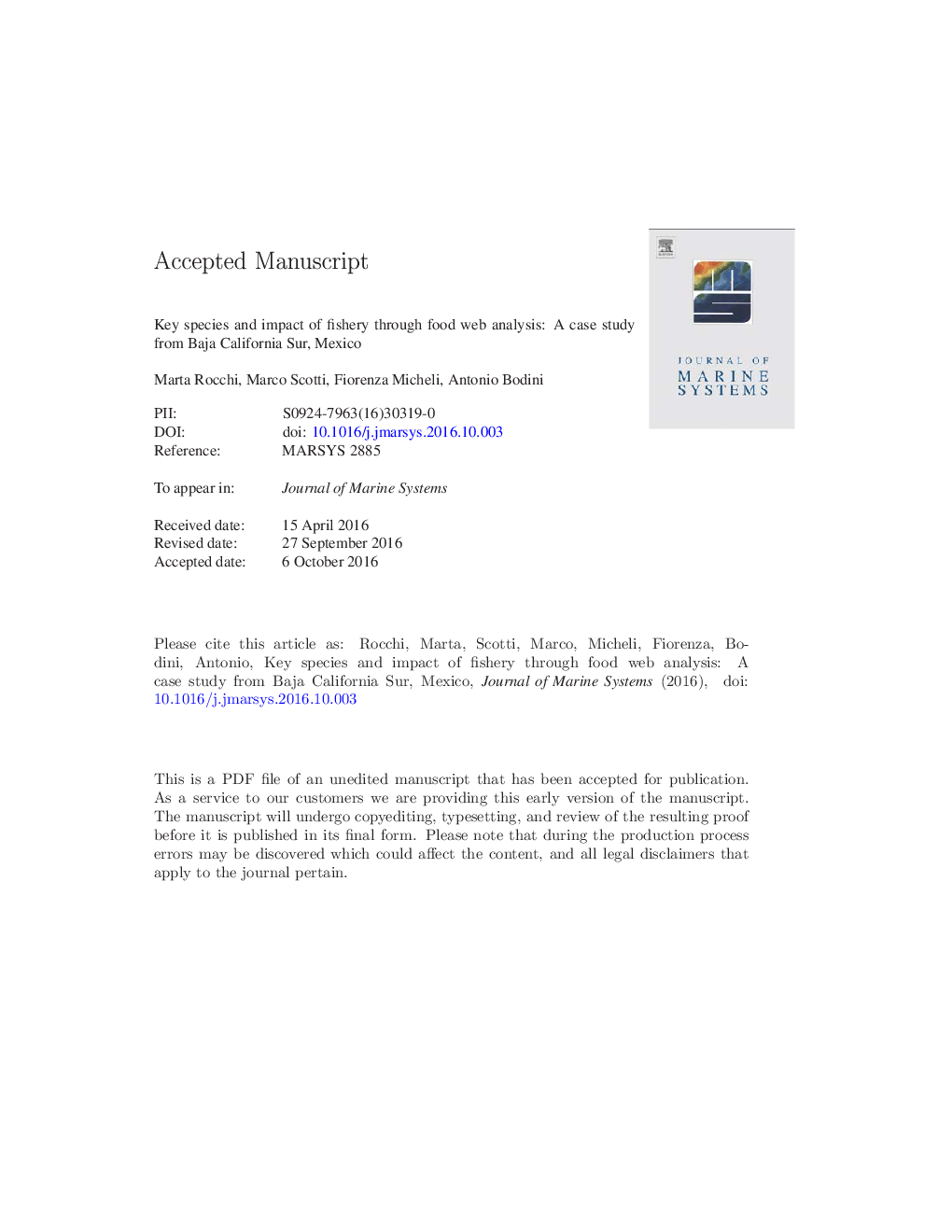| Article ID | Journal | Published Year | Pages | File Type |
|---|---|---|---|---|
| 6386603 | Journal of Marine Systems | 2017 | 30 Pages |
Abstract
Ecosystem-Based Management (EBM) aims to support the protection of natural ecosystems and to improve economic activities. It requires considering all of the actors interacting in social-ecological systems (e.g., fish and fishers) in the understanding that their interplay determines the dynamic behavior of the single actors as well as that of the system as a whole. Connections are thus central to EBM. Within the ecological dimension of socio-ecological systems, interactions between species define such connections. Understanding how connections affect ecosystem and species dynamics is often impaired by a lack of data. We propose food web network analysis as a tool to help bridge the gap between EBM theory and practice in data-poor contexts, and illustrate this approach through its application to a coastal marine ecosystem in Baja California Sur, Mexico. First, we calculated centrality indices to identify which key (i.e., most central) species must be considered when designing strategies for sustainable resource management. Second, we analyzed the resilience of the system by measuring changes in food web structure due to the local extinction of vulnerable species (i.e., by mimicking the possible effect of excessive fishing pressure). The consequences of species removals were quantified in terms of impacts on global structural indices and species' centrality indices. Overall, we found that this coastal ecosystem shows high resilience to species loss. We identified species (e.g., Octopus sp. and the kelp bass, Paralabrax clathratus) whose protection could further decrease the risk of potential negative impacts of fishing activities on the Baja California Sur food web. This work introduces an approach that can be applied to other ecosystems to aid the implementation of EBM in data-poor contexts.
Keywords
Related Topics
Physical Sciences and Engineering
Earth and Planetary Sciences
Oceanography
Authors
Marta Rocchi, Marco Scotti, Fiorenza Micheli, Antonio Bodini,
